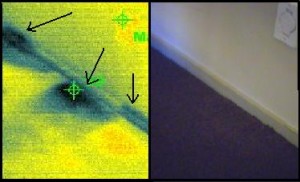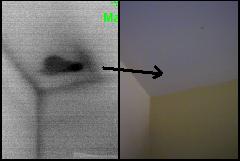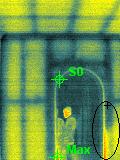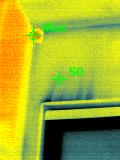Do you have a musty or damp smell in certain rooms of your home?
Is the source of the problem obvious?
On a regular basis we get calls from home owners saying they have noticed a damp musty smell appear in their home. If you have noticed this in your home, there is a problem somewhere… as these smells don’t just appear for no reason. If you leave these smells go undetected for an extended period of time, the problem can be compounded if gradual leak damage is taking place where you can’t see it happening.
Sometimes it may be due to rising damp, internal plumbing or bathroom leaks, or leaky cladding/window where water has found it’s way down your wall and onto your carpet under the skirting… without you knowing anything about it.
Recently a home owner of the North Shore called us in to find the source of their damp smell problem. There was very little visual evidence of leaking problems within the house, but our infrared thermal imaging camera instantly discovered the problem.
How to find shower leaks?
The dark area in the above thermal image is water on the carpet. On the back of the wall is a shower that is leaking. The home owner had a book case pushed up against this wall, therefore they couldn’t feel the wet carpet… and you certainly couldn’t see it with the human eye because the carpet is a very dark blue colour (as you can see in the righthand photo above).
We took this infrared photo so the home owner could use this visual evidence to back up his insurance claim for the shower leak. In addition, the carpet was very slightly discoloured, so he may now be able to claim carpet water damage as result of a plumbing leak through the insurance company!
Can’t detect the source of a ‘suspect’ bad odour or smell in your home? Call us in for a look… we can normally find the problem quickly and easy using thermal cameras and advanced moisture meters.










